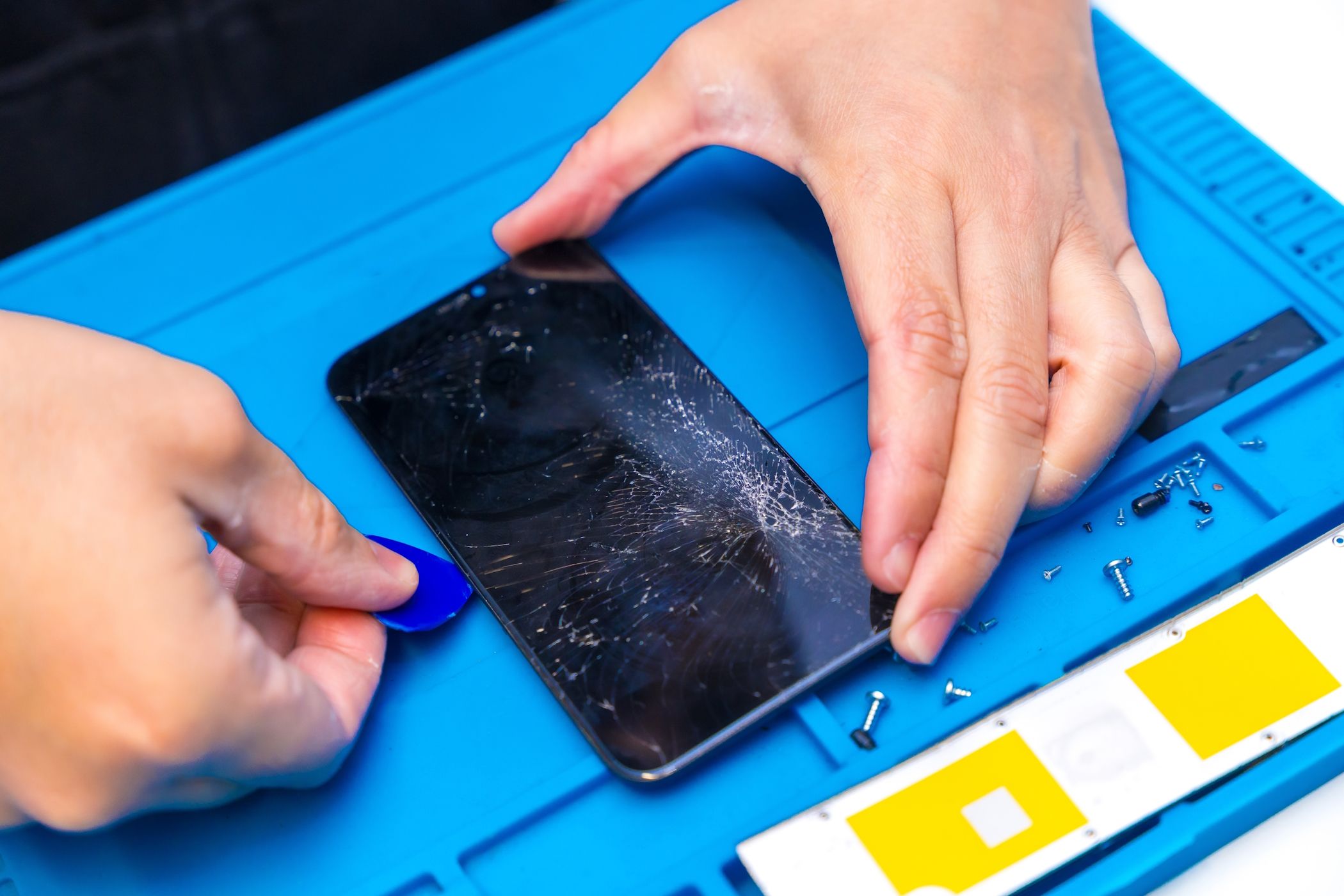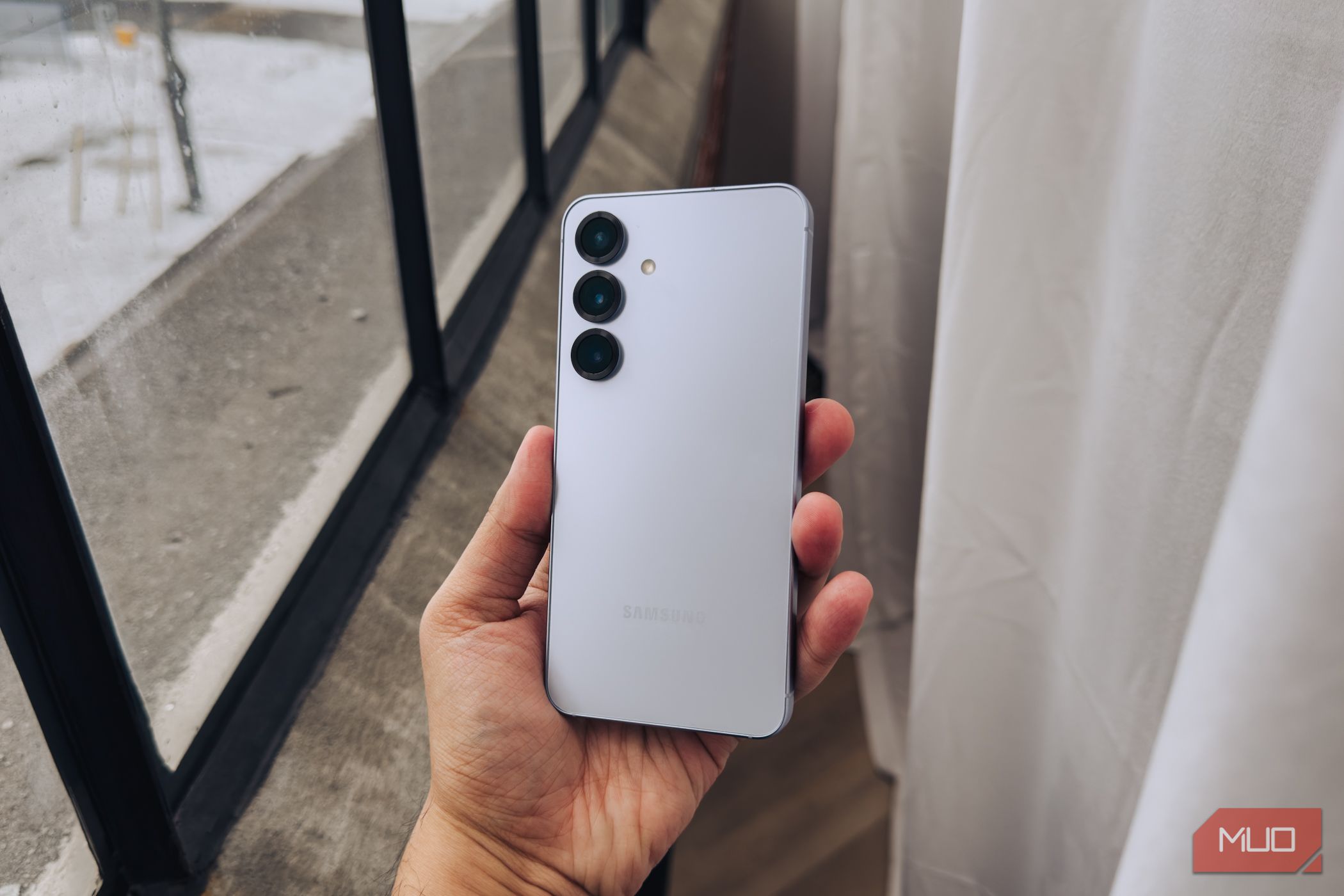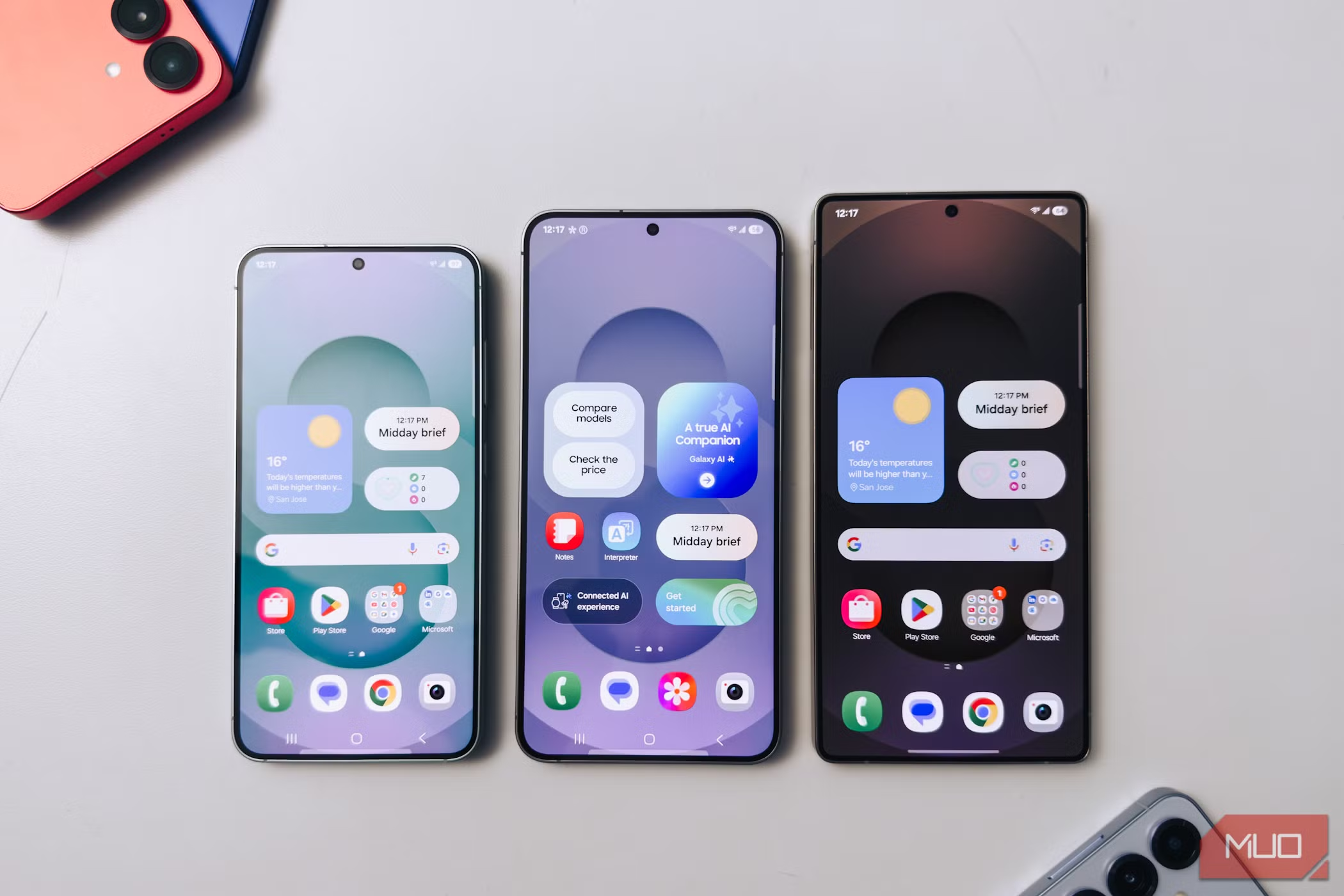The smartphone spec race is not over yet—companies still routinely boast about benchmark scores, fast charging speeds, peak brightness, and the number of megapixels in smartphone cameras. As much as we love talking about new features, there are some things far more important than flashy specs.
6
Longer Software Support With Timely Updates
People don’t upgrade their phones nearly as frequently as they did a decade ago, partly because durability is no longer a problem. We’re now at a point where yearly or biennial upgrades don’t make sense. You don’t need to spend much to get premium hardware features formerly exclusive to flagships, like aluminum frames or glass backs.
Granted, flagship phones have now moved on to titanium, which, while stronger than aluminum, is reserved for top-of-the-line Ultra models that go beyond $1000. And as far as glass protection is concerned, we’re pretty much at the peak of what we can do with the material already, so many mid-range phones are almost as durable as flagships.
This means that while longevity was a matter of hardware degradation, today it’s more about software obsolescence. The longer the manufacturer can offer software support for your phone, the longer you can hold on to it without needing to upgrade.

Related
How Often Should You Buy a New Android Phone?
Android phones are lasting longer than ever. So how often should you replace yours, and what are the warning signs that it’s time to upgrade?
Google and Samsung are two of the best at offering long-term upgrades, as both companies promise up to seven years of OS and security updates. That means the Galaxy S25, which launched with Android 15 out of the box, will keep getting updates until 2032—taking you all the way to Android 22.
You might think this is excessive for two reasons: one, the battery won’t last that long, and two, you probably won’t keep your phone for that long anyway. Both are valid points. However, extended support helps even if you don’t intend to keep your phone for that long.
Longer support extends your phone’s overall lifespan, so when it’s time to sell it after three years or so, the buyer won’t have to settle for an outdated device. It gives them reassurance that, despite buying a used phone, they can experience the latest software—this is one of the major reasons iPhones retain their value so well.
This whole thing also works the other way around. If you’re on a tight budget but don’t want to settle for a cheaper phone, a used flagship with several years of software support left can be a great alternative. You get premium hardware, a fine-tuned camera system, and stellar performance at a fraction of the original price.
If you’re worried about the battery, don’t be. You can usually get an official replacement from the manufacturer, especially if the phone in question is an iPhone or Samsung Galaxy. Both companies carry spare parts for phone models several years old.
5
Availability of Authorized Repair Shops
You should try to get the best value possible for your money when buying a new phone. Still, I’ve recently realized that “value” can mean different things to different people depending on how you use your phone.
For me, it used to mean getting the best specs at the lowest price, and many brands (especially Chinese ones) are more than happy to cater to that expectation. However, I’ve now begun to associate “value” more with long-term reliability and the quality of customer support.
Here’s how I see it: since we’re all keeping our phones for longer now, we are increasingly committing more of our time to a certain company and, therefore, depend on its assistance far more than just a couple of years ago when upgrades were more frequent. And one of the best ways for a company to offer this assistance is to establish local authorized repair centers.
The vast majority of people don’t care if their phone has 8K video recording, reverse wireless charging or ridiculously high benchmark scores. They want to be able to walk into a nearby store, hand over their phone to an authorized technician, explain the problem they’re facing, and get it fixed as fast as possible.
If the company spends every dollar on delivering the best specs possible for the price, it has no budget left to actually serve you when something inevitably goes wrong with your phone.
Setting up brick-and-mortar stores, maintaining an inventory of spare parts for hundreds of phone models, and hiring skilled technicians are all expenses you want companies to invest in. Naturally, only established brands like Apple and Samsung tend to be able to offer this level of assistance.
4
Decent Resale and Trade-In Value
Not obsessing over specs doesn’t mean I’ve stopped looking for value in the literal sense. I now seek it at the time of sale rather than at the time of purchase. In other words, I prioritize resale and trade-in value far more than I used to.
My reason for this is simple. Flagships today are not all that different from their mid-range counterparts. So, the only way I’m willing to buy the former is if I am reassured that I’ll get at least decent value out of it when it’s time to upgrade to a new phone. That way, the initial cost doesn’t feel bloated in any way.
This is one of the big reasons why I haven’t switched to the Google Pixel yet, even though I’ve been wanting to try out its acclaimed camera for a while now. Apple and Samsung have taken major steps to ensure that their flagships retain their value for as long as possible, but Pixel phones lose their value quicker than any other major brand.
iPhones and Galaxy flagships usually fetch close to half their launch price after two years if you trade them in and possibly more if you sell them yourself via online marketplaces.
The Pixel? Less than a quarter of the launch price. The $999 Pixel 8 Pro that launched in October 2023 only fetches $185 on the official Google Store as of May 8, 2025. Imagine spending a grand on a phone and seeing it lose over 80% of its value within two years.
3
Ergonomics of the Handset
I’ve also started to prioritize ergonomics quite a bit lately—not to the point where I’d buy an ultra-slim phone like the Galaxy S25 Slim or iPhone 17 Air that potentially sacrifices other features. But I’ve definitely begun to pay more attention to things like weight, thickness, in-hand feel, ease of one-handed use, and overall dimensions.
This is quite unlike me because I multitask on my phone a lot, which greatly benefits from a bigger screen. Stuff like launching apps in pop-up view, sharing files between two apps in split-screen, and streaming videos in PiP mode while playing board games are all important features I use daily. The bigger the screen, the more content it can fit.
However, a bigger screen comes at the expense of more heft, making everyday use less comfortable. Not only is it more fatiguing, but it also increases the chances of accidental drops, especially if it has a slippery glass back as opposed to plastic or vegan leather. You could buy a silicone case for extra grip, but that’ll add to the overall weight and thickness, too.
I’ve also fallen out of love with flat sides, which aren’t as comfortable to hold. I noticed this when I upgraded to the Galaxy A35 from my older A52. Even though the latter is thicker on paper (8.4mm), it feels slimmer than the former (8.2mm) thanks to its rounded sides. Sadly, flat sides are the norm now, so there aren’t many options otherwise.
2
Abundance of Third-Party Accessories
Specs also won’t help when you’re trying to stick your phone to the kitchen wall for a hands-free Zoom call while cooking. But accessories will. iPhones, in particular, benefit from a massive ecosystem of niche add-ons like suction mounts, MagSafe wallets, power banks, video rigs for content creation, and cases with built-in kickstands.
Basic accessories like silicone cases and tempered glass screen protectors are available for almost every phone model. But, the more niche you go, the faster third-party manufacturers drop support for unpopular models.
Wide accessory support means it’ll be easier to find solutions to your problems. For instance, I’ve grown accustomed to using a matte screen protector (as opposed to a tempered glass one) because its slightly coarse surface eliminates glare and makes gliding my finger across the display much easier, which improves my mobile gaming experience.
1
Well-Optimized Software
Chip manufacturers like Qualcomm, Samsung, and MediaTek have made immense progress over the last decade. So much, in fact, that the lack of raw power is hardly ever why your phone doesn’t work well anymore. Even mid-range phones today have enough power to run many graphics-heavy games at just under max settings.
However, raw power is only a part of the equation. Software optimization influences UI fluidity. Well-optimized software leads to smoother animations, faster app launches, fewer bugs and crashes, faster camera shutter speeds, and more stable network connections. Simply put, it makes your phone feel more agile and responsive to your input.
More importantly, software optimization helps prolong battery life, so you don’t need to reach for the charger as often. You can actually see this in action on Samsung phones—the battery menu shows “Learning usage patterns…” for a few days after you first boot the device.
During this time, the phone learns which apps you use the most and which can be put to sleep to restrict unwanted background activity, reducing power consumption. Once finished, the menu shows your estimated battery life based on the remaining charge in your phone.
It’s easy to get swayed by an impressive spec sheet, but there’s a lot that makes a phone a good investment that can’t be quantified by numbers on a page. A phone that looks great on paper isn’t going to seem all that great if it feels tiring to hold for long, starts slowing down after a few years, no longer gets updates, or has to be mailed to a different city to get repaired while you anxiously wait days for it to return.









:max_bytes(150000):strip_icc()/twoku-twtich-roku-app-2053432b763a40d788ef726974d9ed2a.png?w=1174&resize=1174,862&ssl=1)
Leave a Comment
Your email address will not be published. Required fields are marked *